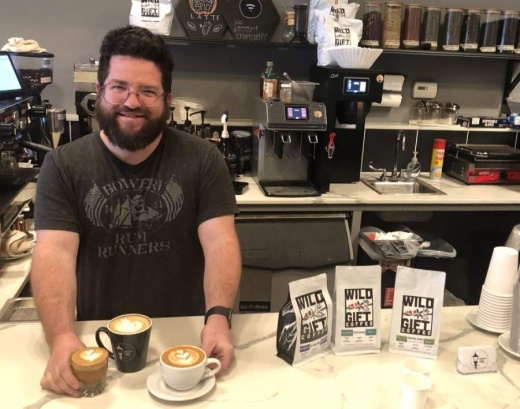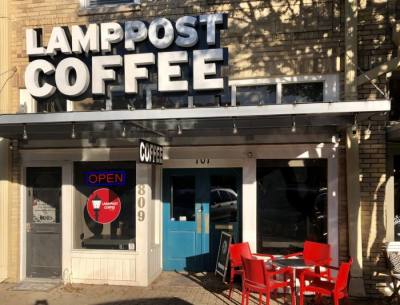His Round Rock coffee shop, nearing five years in business, was on track to double in size by expanding into an empty, adjacent suite. And his second shop, located on the Square in Georgetown, had opened in late September.
Business was booming—then along came COVID-19.
“Revenue is down between 60-70%,” Burns said. “We’re desperate to climb out of this hole.”
Ironically, the Round Rock expansion was completed the day before Gov. Greg Abbott issued an executive order closing dine-in seating for all restaurants and coffee shops across the state to help curb the spread of the coronavirus.
“We almost doubled our seating capacity—we had people sit in there for one day—and then we had to put up all the chairs,” Burns said.
Since then, both the Round Rock and Georgetown locations have been operating with to-go and delivery services only, with walk-in, online or phone-in ordering options available. But following new statewide rules unveiled earlier this week, Burns said he plans to reopen both coffee shops May 1.
Abbott cleared the way for dining establishments to open with limited occupancy—no more than 25% of stated capacity—beginning May 1. Restaurants and other food and beverage providers must also meet a series of training and cleaning requirements amid the global pandemic.
“We are planning to open up to 20-25% capacity,” Georgetown manager Ben Cockrell said. “We’re taking all the protective measures: offering only to-go cups, wearing protective masks, cleaning and washing our hands all the time.”
Cockrell said he spent most of the day April 29 measuring the space within the coffee shop and on the back patio, figuring out where to place tables and how to arrange them in order to help maintain the required 6 feet of distance between customers.
“Safety is our top priority,” Cockrell said. “We want to do the best we can to protect our workers and the customers that come in to make sure things are clean and that the virus stays at bay.”
Burns described the decision to reopen as a difficult one. Among the factors considered were the financial needs of his baristas, who have been unable to work since the coffee shops closed their dine-in facilities. By opening at a reduced capacity May 1, Burns said he plans to assign 70 hours worth of work to his employees at both locations.
Another tension he weighed in the decision-making process is the public health concern alongside the fundamental need to make enough money to keep the lights on.
“We definitely are concerned about safety and whether or not it’s too soon to reopen,” Burns said. “But I feel that because we can reopen we have to, to even have a shot to make it through this.”
While Burns and Cockrell are still configuring tables to assess how many people they can seat at this time, Burns said he estimates approximately 20 people will be the limit at his Round Rock location.
“It could be that reopening does not provide as much of an impact as what we want,” Burns said. “It’s a big game of wait and see. We don’t know what opening up is going to do for the health and safety of our community, for sales and therefore for hours our employees can work.”
In a serendipitous twist, what has been a financial struggle—Burns said he had to pay full rent on the coffee shop’s current space and new expansion during the closures—could turn out to be a helpful boost as Burns looks to reopen. Without the expansion, seating capacity inside the Round Rock location would have been more severely limited.
“With well-spaced tables, I know our customers are going to be thrilled to sit inside and see another smiling face, even from a distance,” Burns said.








